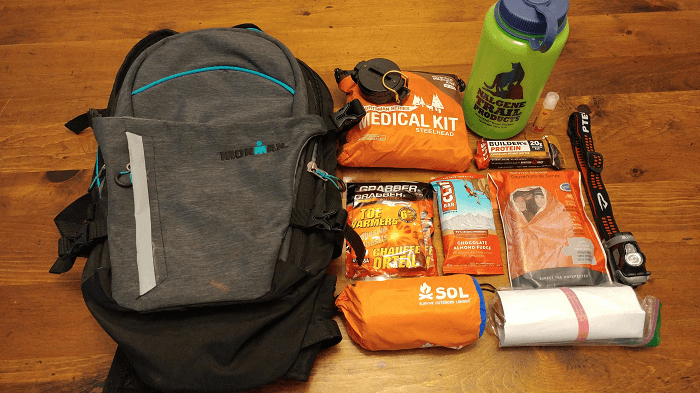Hiking is an exciting outdoor activity that requires proper preparation to ensure maximum comfort, safety, and enjoyment. One essential item you should consider when planning for a hiking trip is the type of shirt you choose to wear. The right hiking shirt can make a world of difference in terms of comfort, protection, and overall performance. However, with so many options available on the market, it can be challenging to determine which fabric is best suited for your needs.
Contents
Importance of choosing the right fabric for hiking shirts
The fabric you choose for your hiking shirt will have a significant impact on your overall experience. The ideal fabric should provide breathability, moisture-wicking, durability, and protection from the elements. Failure to choose the right fabric can lead to discomfort, chafing, skin irritation, and even hypothermia or heat exhaustion.
Overview of cotton vs. synthetic fabrics
When it comes to hiking shirts, two main types of fabrics dominate the market – cotton and synthetic materials. While cotton might be a popular choice for everyday clothing, it is not the best option for hiking shirts. Synthetic fabrics, on the other hand, are designed explicitly for outdoor activities and offer several benefits over cotton.
Why Cotton is Bad for Hiking
Cotton Kills Myth
One of the most significant disadvantages of cotton is its inability to wick moisture away from the body. This means that if you sweat or get caught in the rain, the cotton shirt will absorb the moisture, leaving you feeling damp, cold, and uncomfortable. In extreme cases, this can lead to hypothermia or heat exhaustion, hence the term “cotton kills” popular among hikers.
Why Wet Cotton is Dangerous
Wet cotton can be dangerous since it loses its insulating properties when wet, making it challenging to regulate body temperature. This means that if you get wet while wearing a cotton shirt in cold weather, you risk getting hypothermia, which can be life-threatening. Additionally, wet cotton can cause skin irritation and chafing, leading to blisters.
Is Cotton Good for Hiking in Hot Weather?
Cotton might seem like an ideal option for hiking in hot weather since it is breathable and lightweight. However, cotton absorbs sweat and moisture, leaving you feeling sticky and uncomfortable. Synthetic fabrics, on the other hand, are designed to wick away sweat and moisture, ensuring that your body stays dry and comfortable.
Why Cotton is Bad for Cold Weather
Cotton is not an ideal option for hiking in cold weather since it retains moisture, which can lead to hypothermia. Moreover, cotton does not provide adequate insulation, meaning that you will need to layer up with other clothing items, making it challenging to regulate body temperature. In contrast, synthetic fabrics such as polyester and merino wool provide excellent insulation while still maintaining breathability and moisture-wicking capabilities.
Is Polyester Good for Hiking?
Benefits of Synthetic Fabrics
Synthetic fabrics are specifically designed for outdoor activities and offer several advantages over cotton. They are lightweight, durable, moisture-wicking, and quick-drying, making them ideal for hiking in various weather conditions. Additionally, synthetic fabrics are resistant to wrinkles, shrinkage, and fading, ensuring they retain their shape and color even after many washes.
Pros and Cons of Polyester
Polyester is one of the most popular synthetic fabrics used in hiking shirts. It is lightweight, durable, and moisture-wicking, making it ideal for outdoor activities. However, polyester has some disadvantages, including its lack of breathability, which can lead to overheating and discomfort. Moreover, polyester can retain odors, making it challenging to get rid of unpleasant smells even after washing.
Other Synthetic Fabric Options
Other synthetic fabrics that are ideal for hiking shirts include nylon, spandex, and polypropylene. Nylon is lightweight, quick-drying, and abrasion-resistant, making it ideal for harsh terrain. Spandex provides excellent stretch and flexibility, ensuring maximum comfort and freedom of movement. Polypropylene is exceptionally breathable, making it ideal for hot weather conditions.
Best Material for Hiking Shirts
Merino Wool
Merino wool is a natural fiber obtained from Merino sheep. It is known for its exceptional insulation properties, moisture-wicking capabilities, and odor resistance. Additionally, merino wool is soft, lightweight, and comfortable, making it ideal for hiking shirts. Merino wool also has natural UV protection, making it ideal for hiking in sunny weather.
Nylon
Nylon is a synthetic fabric that is lightweight, abrasion-resistant, and quick-drying, making it ideal for hiking shirts. Nylon also provides excellent UV protection, making it ideal for hiking in sunny weather. Additionally, nylon is durable and long-lasting, ensuring that your hiking shirt lasts for many trips.
Blends
A blend of different materials can also be an excellent option for hiking shirts. For instance, a blend of merino wool and synthetic fibers such as polyester can provide the best of both worlds, offering excellent insulation, breathability, moisture-wicking, and odor resistance. Blends can also offer a more affordable option while still providing high performance.
What to Look for in a Hiking T-Shirt Design
Fit and Comfort
The fit and comfort of your hiking shirt are crucial since you will be wearing it for an extended period. The shirt should fit well without being too tight or too loose. It should also allow for freedom of movement, ensuring that you can move comfortably on the trail.
Breathability
Breathability is crucial in ensuring that your body stays cool and dry when hiking. The ideal hiking shirt should allow air to circulate freely, preventing the buildup of sweat and moisture. Look for shirts with mesh panels, venting, or breathable fabrics such as merino wool or nylon.
Moisture-Wicking
Moisture-wicking capabilities are essential in ensuring that your body stays dry and comfortable when hiking. Look for shirts made from synthetic fabrics designed explicitly for moisture-wicking, such as polyester or nylon. Merino wool can also wick away moisture, making it an excellent option for hiking shirts.
Durability
The durability of your hiking shirt is essential since it will be exposed to harsh outdoor conditions. Look for shirts made from durable materials such as nylon, polyester, or merino wool. Additionally, check for reinforced seams, sturdy zippers, and buttons that can withstand wear and tear.
Conclusion
Choosing the right hiking shirt is crucial in ensuring that you have a comfortable and enjoyable hiking experience. While cotton might seem like a popular option for everyday clothing, it is not the best material for hiking shirts. Synthetic fabrics such as polyester and nylon offer several benefits over cotton, including breathability, moisture-wicking, and durability. Merino wool is also an excellent natural alternative for hiking shirts.
When choosing a hiking shirt, consider factors such as fit and comfort, breathability, moisture-wicking, and durability. Look for shirts made from high-quality materials and reinforced seams, zippers, and buttons. With the right hiking shirt, you can stay comfortable, dry, and protected on the trail, ensuring maximum enjoyment of the great outdoors!
Hi, I am Michael B.McMahon. I am a professional Hiker, Traveler, Climber & Mountainer. I love to travel a lot. I describe my all experience in this blog. I visit a lot of places. I hope my all article helpful everyone. Enjoy It




